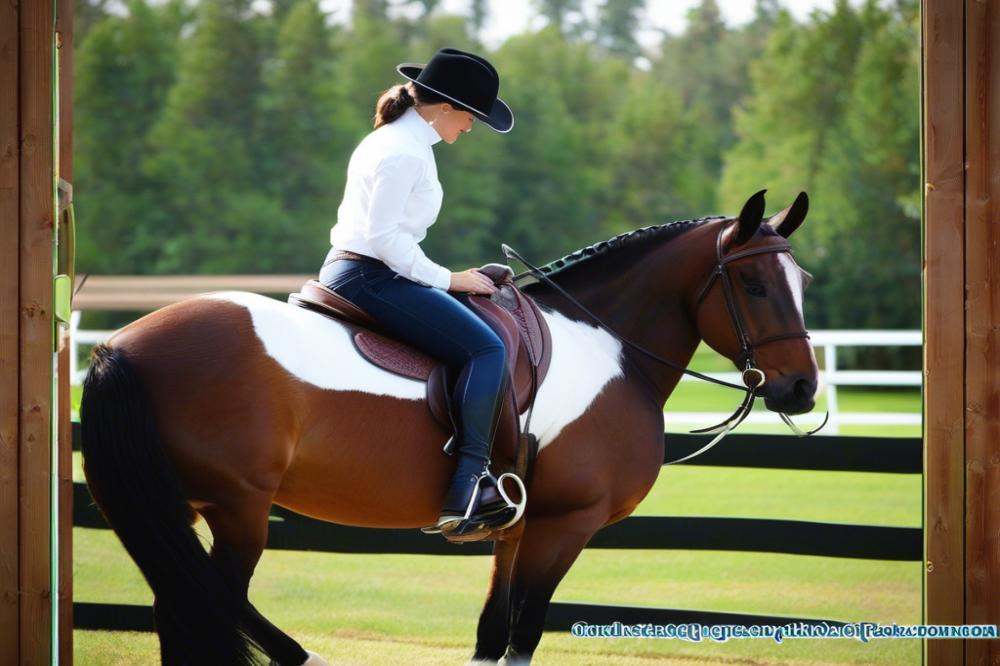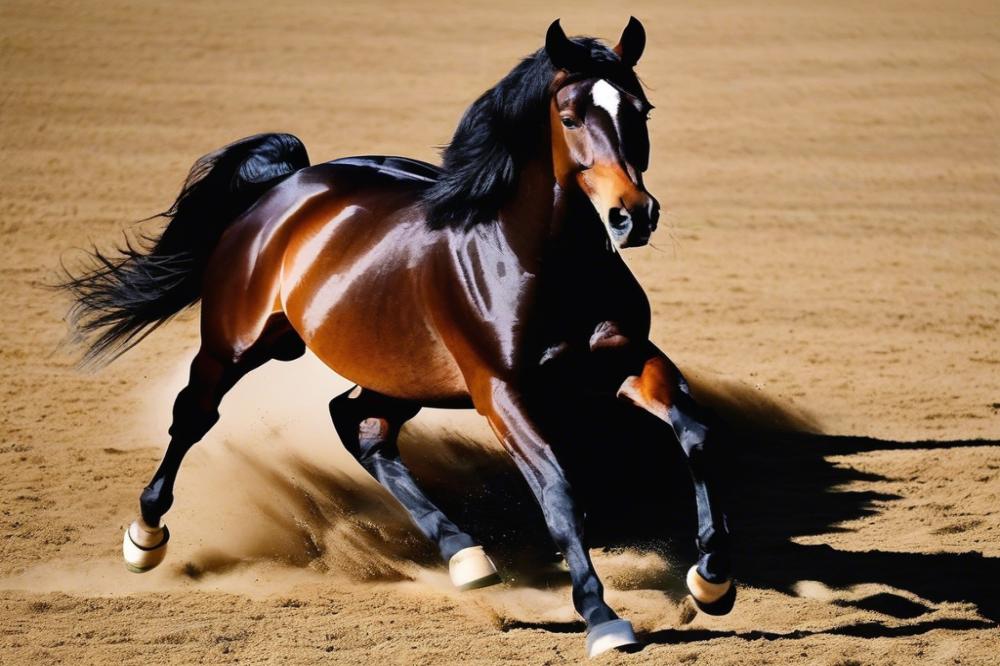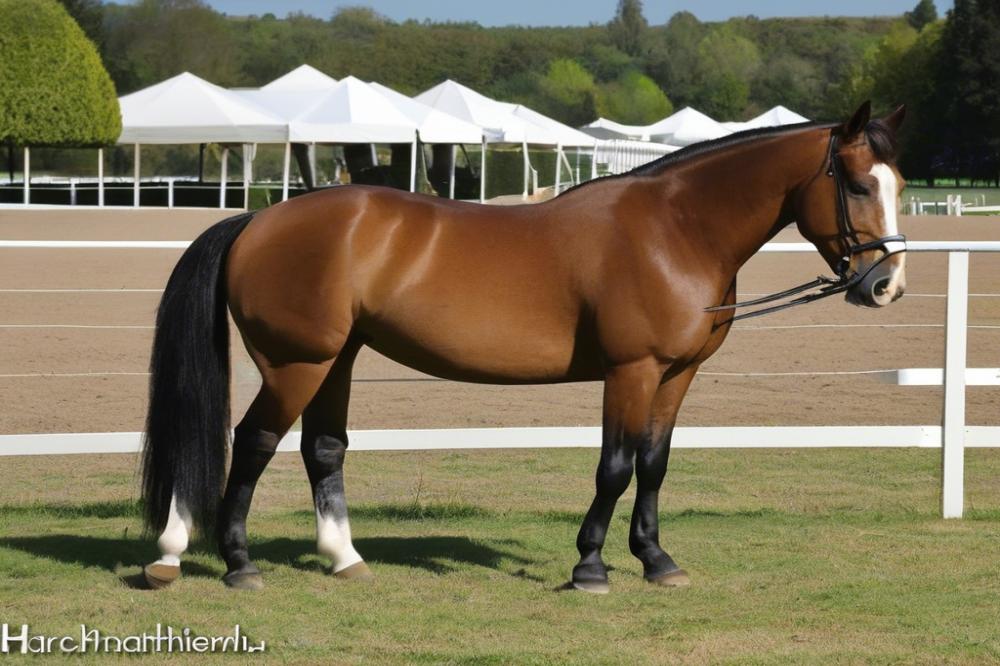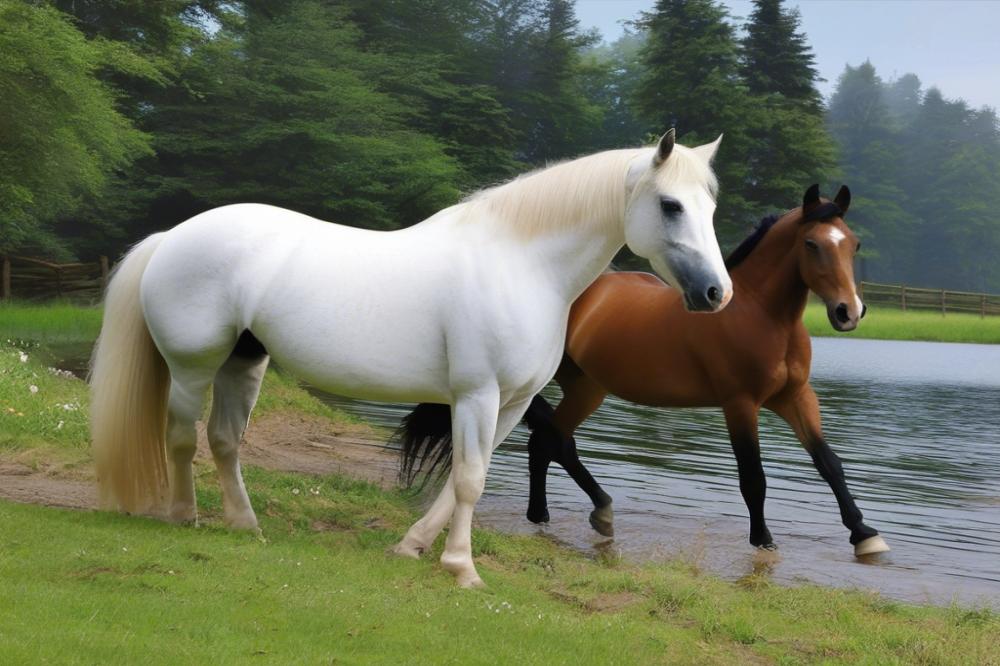The Importance of Teaching a Horse to Lay Down
Have you ever watched a horse gracefully lower itself to the ground? It’s a sight that can leave anyone in awe. Teaching a horse to lay down is not just a party trick for equestrian shows; it’s an important skill that plays a significant role in overall horse training and handling. A horse that can lay down on command is often calmer, creating a stronger bond between the animal and its handler. It’s almost like learning a new dance step together!
Benefits abound when it comes to this particular behavior. For one thing, having a horse that can comfortably lay down makes grooming, veterinary checks, and milder forms of training easier. Think about it. If your horse is relaxed and lying down, you can check for any signs of discomfort without having to wrestle with them. Additionally, this skill can help in competitive environments like the Aalborg Racing Arena or the Camperdown races, where a well-mannered horse stands out amongst a crowd.
As with any horse care or training technique, it’s essential to understand the basics before jumping in. Knowing horse behavior is critical. Horses are prey animals and tend to be cautious. When you ask a horse to lay down, you’re asking it to trust you completely. This trust makes the process more successful and, dare I say, a lot less nerve-wracking for both of you. Keeping safety in mind is vital; if things get a little too chaotic, it can create negative experiences for both the horse and trainer.
Speaking of safety, remember to approach the task with patience. A horse is not a robot; it won’t simply comply without thought. Using gentle cues and positive reinforcement during training can make all the difference. Instead of getting frustrated, think of the process like building a puzzle together—piece by piece, you’re working toward a beautiful picture of trust and cooperation.
In the upcoming sections, we’ll delve into various equestrian techniques that can facilitate this type of training. Get ready to witness some amazing horse tricks emerge from your efforts!
Understanding Equine Behavior

First off, horses are amazing creatures with instincts that date back thousands of years. They are prey animals, which shapes their behavior in unique ways. When you think about a horse’s natural instincts, staying alert is key. If a horse feels threatened, it will stay standing and ready to flee. This is vital to understand, especially if you want to teach your equine friend to lay down.
Horses often lay down to rest. It’s their way of catching some z’s and can seem quite vulnerable. However, when they do this, it shows comfort and trust. Finding a safe place to doze off indicates that a horse is relaxed in its surroundings. Equestrian skills and techniques should focus on creating that environment. A horse that feels secure is more likely to cooperate during training sessions.
Comfort and Trust
Every horse has personality traits that affect how it interacts with people. One horse might relish human contact, while another may prefer to keep its distance. Establishing a bond is crucial for effective horse training. A trainer who understands a horse’s quirks can adapt their approach accordingly. The more time you spend with a horse, the better the bond you’ll form.
Think about your own pet at home. Dogs and cats also show signs of trust when they choose to relax around us. It’s similar with horses. They need to know they are safe before they feel comfortable enough to lay down. Patience and affection will go a long way in building that bond. When a horse knows you’re a friend, it’s more likely to listen to your cues.
Horse Behavior in Action
Consider training methods that focus on positive reinforcement. Offering treats or gentle pats can encourage the horse to lay down on command. Remember, the goal is to create an environment filled with trust and security. That’s where the magic of equestrian techniques really shines through. Using soft tones and a calm demeanor will make a difference. A horse that respects you will be more inclined to show off its tricks, including lying down when asked.
Never forget to reward success—no matter how small. Just like humans, horses appreciate acknowledgment. They thrive when rewarded, turning simple horse care into enjoyable moments for both. As you work together, both horse and trainer can enjoy the journey. It’s an adventure filled with discovery and growth, one that strengthens relationships.
Preparing for Training

Before diving into the process of teaching a horse to lay down, you’ll want to gather some important equipment. Basic horse training tools, like a halter and lead rope, are essential. Having a soft brush handy can help keep your horse relaxed. A treat pouch is also a good idea for rewarding your horse during this process. You want to create a positive experience, after all!
The next step is picking the right spot for the training session. A safe environment is crucial for both you and your horse. Choose a flat area that’s free from distractions. If you have an outdoor riding arena, that’s often a perfect location. Avoid places with loud noises or unexpected events that might startle your horse. They can be curious creatures, and you want their focus on you!
Patience is your best buddy during this training. Rome wasn’t built in a day, and neither will your horse’s new trick be perfected overnight. Training can take time, so prepare yourself for the long haul. Consistency matters just as much. Horses benefit from regular, short sessions rather than infrequent, lengthy ones. Keep sessions upbeat and engaging, but don’t rush through the steps!
Using positive reinforcement is key. Horses are eager learners when they feel safe and appreciated. Always celebrate small victories. When your horse shows any sign of understanding, give them a treat or a kind word. This builds trust and makes learning fun! Enjoy the journey, and remember that every horse learns at its own pace.
Step-by-Step Training Process

To start training a horse to lay down, groundwork and trust-building exercises are vital. Familiarizing your horse with basic commands is a great place to begin. Spend some time leading your horse around, getting them comfortable with your presence. This forms a bond that serves as the foundation for all further training.
After the initial groundwork, it’s time to introduce positive reinforcement techniques. Horses respond well to rewards. When your horse displays the desired behavior, offer a treat or some gentle praise. You could say, “Good boy!” or “That’s it!” This helps the horse associate laying down with something pleasant. Consistency is key in this part of horse training.
Specific Cues and Signals
Next, outline the specific cues and signals that will guide your horse to lay down. A common method involves a verbal cue like “down” or even a hand signal. You can think of it like having a secret language with your horse. Some trainers use a light pressure on the horse’s shoulder to guide them down gently. Whichever way you choose, your cues must always be clear and consistent.
Gradual Progression
Progress gradually and keep a close eye on how your horse reacts. Patience is your best friend here. If your horse seems hesitant or confused, it’s better to take a step back and reassure them. Celebrate small victories, like when they lower their front legs, even if they don’t go all the way down yet. This builds confidence and strengthens your bond.
Always maintain a calm and positive atmosphere. Horses are like mirrors to our emotions. If you panic or get frustrated, they will likely respond to that energy. It’s almost like trying to coax a shy puppy out from under the couch. Understanding horse behavior is crucial in these moments.
Remember that every horse is unique, with their own personality and pace of learning. You might find some horses pick things up quickly, while others take their sweet time. That’s perfectly okay! Equestrian skills aren’t just about getting the trick down; they also involve understanding and meeting your horse where they are.
When all goes well, and your horse lays down, give them lots of love and praise. This encourages them to repeat the behavior. Each session should end on a positive note, no matter how short, so your horse looks forward to coming back for more. Think of it as building a staircase, one step at a time. Always consider their comfort and confidence.
Common Challenges and Solutions
Training a horse to lay down can be more similar to solving a puzzle than a straightforward task. Each horse has its own personality and background, which can lead to various challenges during the process. Your equestrian skills and patience will be tested, but it’s all part of the journey.
Identifying Potential Issues
First, let’s look at resistance. Some horses may be hesitant. This could stem from lack of trust or previous negative experiences. Fear often plays a significant role in how a horse behaves. Recognizing these emotions is crucial in horse training. Watch for signs like flaring nostrils, pinned ears, or an unwillingness to move forward.
Handling Resistance and Fear
When faced with a resistant horse, approach with kindness. Start by building a bond. Spend time grooming or just hanging out. Let the horse get used to your presence first. Positive association with you can help break down those barriers. You might even try rewarding small steps. A treat or gentle praise can go a long way. It’s all about encouragement.
Overcoming Specific Challenges
Now, let’s think about a horse that won’t lay down. Sometimes, it’s a matter of comfort. Turf conditions or hard ground can be off-putting. Using a soft mat might help. The right environment plays a vital part in this type of horse care. Make adjustments based on your horse’s needs.
Additionally, if your horse gets nervous during training sessions, be patient. Start with simple equestrian techniques. Teach other horse tricks first. Choosing something less intimidating can boost their confidence. Gradually introduce the laying down command once they seem more at ease. Different techniques can yield varied results, so stay flexible in your approach.
Lastly, remember to keep sessions brief and enjoyable. If either you or your horse becomes frustrated, take a break. Sometimes, all it takes is a little patience and innovation to keep moving forward. After all, a positive attitude can make all the difference.
Maintaining the Skill
Once your horse has mastered the lay down command, it’s vital to keep the skill fresh. Horses can be like kids; without regular practice, they may forget what they learned. To reinforce the command, try rewarding your horse with treats or pats when they respond correctly. This positive feedback encourages them to repeat the behavior.
Regular practice is just as important as the initial training. Set aside a few minutes during your session to refresh these equestrian skills. Horses thrive on routine, so including lay down in your daily activities helps solidify the command. It’s as if you are adding an exciting note to an otherwise familiar song. Practice makes perfect, after all!
The benefits of a horse that can lay down on command are remarkable. First, it enhances your connection with the animal. Trust grows when they know they can rely on you. Moreover, this trick can be handy during veterinary visits or in situations requiring calm behavior. Think about how impressive it’d be for your friends to watch your horse respond calmly to your cues. It’s an impressive display of horse training and horse care!
Some may wonder why this skill is essential. Imagine a stressful scenario, like a scary noise or sudden movement. A horse that can lay down on cue will likely feel more at ease, allowing for better management of their behavior. Laying down can act as a calming technique whenever needed.
Don’t underestimate the value of these equestrian techniques. A horse that lays down on command isn’t just a neat trick; it represents a bond of communication and trust. Plus, it opens the door for other horse tricks. With a solid foundation in laying down, you can teach more advanced skills down the line!
Keep a lighthearted approach during practice. Horses can sense our emotions and react accordingly. If you’re having fun, they will too. A laugh or two can turn practice into a delightful experience for both of you. Remember, horse behavior mirrors the environment, so let it be positive and encouraging!
Wrapping Up the Journey
In teaching a horse to lay down, several key points stand out that can really make a difference. Patience is essential. Just like learning any new skill, it takes time for your horse to feel comfortable and confident. Clear, consistent cues help build that understanding. Remember to break it down into steps; rushing through can lead to confusion or even anxiety.
Using positive reinforcement can turn training sessions into fun bonding experiences. Horses respond well to treats, praises, or scratches. It’s similar to how we feel good when we’re rewarded for our efforts! Keep your sessions short and engaging to hold your horse’s attention.
When you step into the world of horse training, always prioritize responsible and humane methods. Think about it like this: nobody wants to be forced into doing something uncomfortable, right? The same goes for our equine friends. Nurturing their trust instead of pushing them too hard will yield a happier and healthier horse, benefiting both you and your steed in your shared horse life.
Teaching a horse to lay down also offers a uniquely rewarding experience. Picture it—your horse gently lowering itself, trusting you completely. You create a bond that goes beyond just rider and mount. Whether you’re into English and Western riding, this skill can enrich the relationship you have with your horse. Just imagine the look of pride on both your faces!
In conclusion, approach this process with kindness, understanding, and a sense of humor. After all, this journey is about more than just the end result; it’s about building mutual respect and trust that lasts long after the last session is over. So, get out there and enjoy every moment with your horse—because every small victory deserves to be celebrated!



